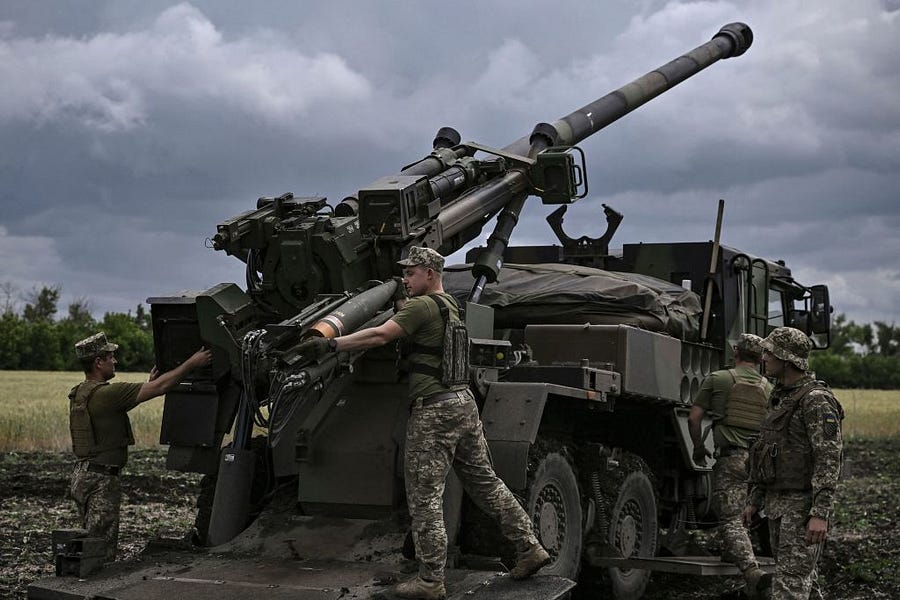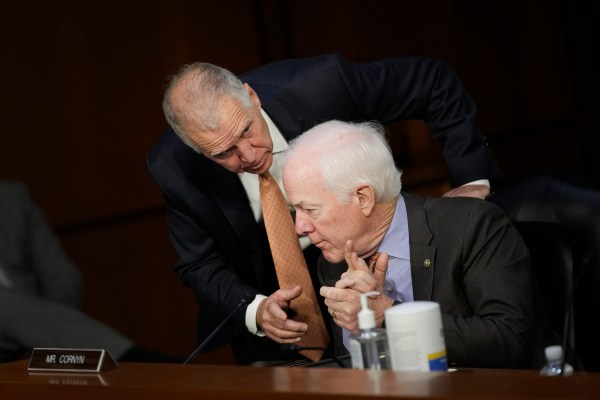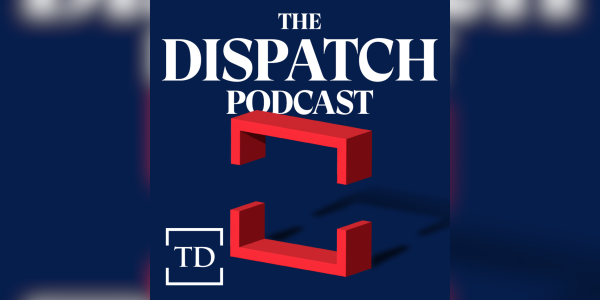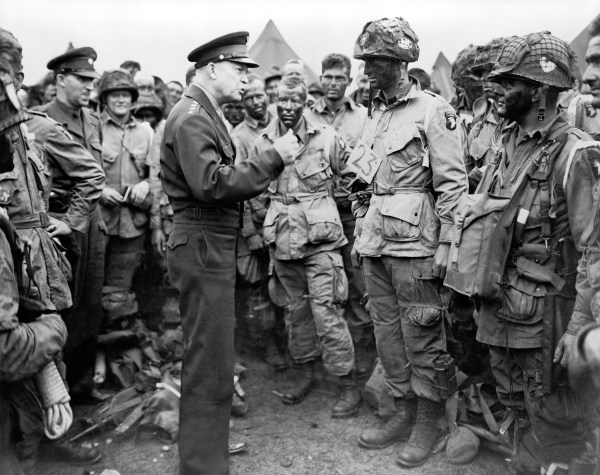From the moment that Russian forces retreated from Kyiv and Kharkiv, it has been apparent that this second phase of Russia-Ukraine war would last for some time. It may not go as long as the first phase—from 2014 until this past February—but it might. It depends.
Some of the variables have become near-constants. Russia now lacks the capacity to break the Ukrainian military or the Ukrainian people’s will to freedom. Ukraine now lacks the capacity to mount a large enough counteroffensive to break the Russian military or Vladimir Putin’s will to conquest. Russian strength is presently waning while Ukrainian strength is waxing, but the pace of change is slow.
But because this is a larger and wider war, a challenge to the post-Cold-War European peace and the global, liberal structures built and nursed by the United States since 1945, things get uncertain when one looks beyond the direct combatants. Ukraine has offered itself as the battlefield between the West and its adversaries, but parts of the West wish it had not done so; some seem to find Ukrainian suffering annoying. To be sure, Great Britain, Poland, and the Baltic states are backing Kyiv to the hilt. Support in central and southeastern Europe has been better than it might have been, minus horrible exceptions such as Hungary and Serbia. Recep Tayyip Erdoğan’s Turkey has been predictably transactional.
Yet Western Europe has proved itself—again—entirely unready to exercise geopolitical leadership of any sort; Germany, in particular, has simply become incapable of strategic thought or behavior. France’s vaporous vision of European “strategic autonomy” has all but evaporated. Italians are evenly divided over who to blame for the war (Russia or Ukraine or the U.S. or the European Union) and who’s the biggest obstacle to peace. Recently, German Chancellor Olaf Scholz, French President Emmanuel Macron and Italian Prime Minister Mario Draghi at last made the pilgrimage to Kyiv—and to see the remains of the massacres in Bucha and Irpin. They came away both shocked by the realities of Russia’s brutality and affirming their support for Ukraine. Yet no sooner were the three off the return train to Poland than Scholz’s foreign policy adviser Jens Plottner told the German Council on Foreign Relations that focusing on military aid to Ukraine was the product of “feverishness that misses the big issues,” such as “what our relationship with Russia should be like in the future.” Wartime wags in Kyiv have a new term, “Scholz-ing,” which means talking big and delivering little.
Thus the question is: What will America do?
The time for deciding is now. The battles for Kyiv and Kharkiv won, the Ukrainians are, contrary to some observers, winning the battle in the Donbas. This battle is not about control of terrain per se but about the attrition of military forces. As previously in Mariupol, Ukraine is trading tiny bits of territory while exhausting Russian combat power at an exacting rate. As horrible as the arithmetic is for Ukraine, it’s worse for Russia so long as Putin is reluctant to mobilize more comprehensively—and again, it’s unlikely that Moscow can now produce more useful power in a timely fashion. The Ukrainians are also exploiting the opportunities created by Russian operational obsessions, such as mounting their own incrementally advancing drive toward the Black Sea port of Kherson. In sum, the Ukrainians are about to force the Russian military to “culminate,” that is, reach the point where they must go over to a defensive posture. Putin currently appears to be attempting something of a surreptitious further mobilization by pressuring conscripts to accept contracts for further service, recruiting from militias in in the Russian-controlled parts of the Donbas, and transferring personnel from the occupied regions of Georgia. Yet Russia’s ability to generate substantial additional forces in a timely way is quite questionable.
This will not be a point of complete battlefield stasis, however. As longer-range U.S. and Western rocket artillery makes its way into Ukrainian hands and to the Donbas front, the Russians will lose their one remaining major tactical advantage in artillery; the Ukrainians will not ever match the Russians round for round, but the Ukrainians may achieve greater effect. The Russians will have to pull their guns and multiple-launch rocket systems back from front-line support and indiscriminate bombardment of Ukrainian towns. Fear of Ukrainian air defenses has already similarly constrained the operations of the Russian air force. As around Kyiv and Kharkiv and Kherson, Ukrainian infantry and other forces will have an opportunity to creep forward.
This, however, is a recipe for an exceptionally bloody conflict in the manner of the World War I western front. It would be an even sterner test of Ukrainian willpower and tactical ingenuity. Even if the Russian hold on the Donbas and southern Ukrainian coast is loosened, Putin has other cards to play, most notably measured by the control of natural gas supplies to Germany and elsewhere across Europe and the Black Sea chokehold on Ukrainian agriculture critical to life—and political stability—across Mediterranean Africa and the Middle East; the rising cost of bread and cooking oil were the proximate cause of the Tahrir Square protests that felled the government of Egypt’s Hosni Mubarak in 2011. In the fall, as Putin’s military runs out of steam in Ukraine, these other weapons will become more potent.
Again the question: What will America do?
The Biden administration has done a remarkable job in providing Ukraine with the arms it has needed to defend itself against the Russian invaders, more remarkable when one considers the humiliation of the retreat from Kabul less than a year ago. It has built sufficient bipartisan support in Congress for its efforts, held a fretful NATO together (and indeed, encouraged a new round of alliance enlargement), organized a logistics and weapons-supply network to funnel weaponry to the Ukrainians all the while exposing the emptiness of Putin’s escalatory threats.
Unfortunately, these steps are not sufficient to seize the opportunity just over the horizon or to avoid the looming larger crisis. It is reasonable to suppose that the rocket artillery launchers and munitions already in the pipeline—and the creation of a logistics network inside Ukraine to get much larger volumes of equipment and ammunition eastward and southward to the front lines—will accelerate the culmination of the Russian offensive and begin to tip the scales in Kyiv’s favor. Yet even as the Russians become spent, the Ukrainians will themselves be heavily taxed. If they are to win a larger, campaign-sized victory by exploiting the exhaustion of Russian power—say, rolling the lines back toward those of February 24 or thereabouts—they will need a powerful, combined-arms, air-and-ground capability and capacity, built around relatively modern Western combat systems. That means fourth-generation aircraft such as the F-16, complete with air defense suppression and other electronic warfare gear, air-to-air and air-to-ground missiles. It means more and longer-range artillery rounds and air defenses like the Patriot to hold targets inside Russia at risk. It also means highly mobile and powerful land force of sufficient size to penetrate Russian defenses and exploit a breakthrough. These will require expanded training and advising. Perhaps the most difficult challenge will be to build a sustainment capacity for a counteroffensive force, for which funding and organizing the large and very capable pool of U.S. and Western logistics contractors would be extremely helpful.
Assembling, equipping, training and fielding such a force is —even with the urgency of the Ukrainian situation—the work of many months, and a 180-degree pivot from the insurgency for which the Biden administration originally prepared. And while it may well be that plans and preparations are afoot to bring the Ukrainian military to recent Western standards, President Biden needs to begin to lay the predicate before the Congress and the American people more generally; such support could easily be double or triple the last $35 billion administration request (which Congress passed, and Biden signed, as a $40 billion package). The White House will have to divert a good deal of energy from the fall’s congressional elections (already a gloomy prospect for Democrats) in the service of long-term U.S. strategic interests. Biden will likewise have to assert a stronger hand in Europe, even with allies most supportive of Ukraine—there is a sense in which transferring Slovakian Mig-29s today creates a potential opportunity cost in fielding a NATO-standard F-16 in a few months’ time.
Conversely, the failure to seize the moment will have terrible consequences beyond even the problems of energy supply and famine—and the likely surge of migrants—for Europe and much of the Middle East and Africa. Depriving the Ukrainians of the chance to end their nightmare sooner rather than later, of saving the lives and the vision of the free and liberal state for which they are dying will say much about the character of American leadership in the 21st century; our allies and adversaries all are watching closely.
The spotlight is on us, and on our president. Only the United States has the resources—and the resources to spare—to tip the balance in Ukraine. Only Joe Biden—approaching his 80th birthday, a career follower rather than a leader—is in position to summon the strength of our divided and distracted republic. Cometh the hour. Cometh the man?






Please note that we at The Dispatch hold ourselves, our work, and our commenters to a higher standard than other places on the internet. We welcome comments that foster genuine debate or discussion—including comments critical of us or our work—but responses that include ad hominem attacks on fellow Dispatch members or are intended to stoke fear and anger may be moderated.
With your membership, you only have the ability to comment on The Morning Dispatch articles. Consider upgrading to join the conversation everywhere.